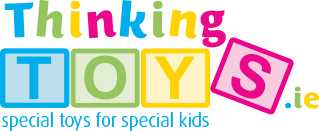Purchase Now
What is Cerebral Palsy?
- Cerebral palsy (CP) is a neurological condition caused by brain damage during pregnancy, birth or a brain injury.
- Cerebral palsy causes a range of disabilities, from mild to severe.
- Cerebral palsy is the leading cause of physical disability in childhood with an incidence of 2-2.5 per 1,000 live births.
- Some of the potential issues a child with cerebral palsy may face include:
- Movement and walking disabilities
- Speech difficulties
- Learning disabilities
- Cognitive impairments
- Hearing or vision loss
- Epilepsy
- Emotional and behavioral challenges
- Spinal deformities
- Joint problems
Types of Cerebral Palsy:
- Spastic Cerebral Palsy: accounts for 75% of all Cerebral Palsy cases. It causes increased muscle tone, known as spasticity and causes:
- Delayed developmental milestones for movement.
- Movement inhibition.
- Difficulties controlling muscle movement.
- Difficulties moving from one position to another.
- Dyskinetic Cerebral Palsy: is the second most common type of CP. Symptoms include:
- Dystonia, repetitive and twisting motions.
- Athetosis, writhing movements.
- Chorea, unpredictable movements.
- Poor posture.
- Painful movements.
- Difficulty swallowing or talking.
- Ataxic Cerebral Palsy: is the least common Cerebral Palsy. It causes poor balance, limited coordination, tremors, and shaky movements that are difficult to control.
- Mixed Cerebral Palsy: causes symptoms characteristic of two or three of the other types. Spastic-dyskinetic cerebral palsy is the most common type of mixed CP.
How Is Cerebral Palsy Treated?
- Various Medications: help control spastic movements, seizures, relieve pain, and anage other symptoms and related conditions.
- Surgery: is a critical part of treatment for many children with CP. Surgical procedures may improve mobility or manage pain. Common procedures include tendon or muscle release, and scoliosis surgery.
- Different types of therapies: to treat people with cerebral palsy include:
- Physical
- Occupational
- Feeding
- Aqua
- Horse and animal
- Music
- Play
- Behavioral
- Speech/Language
